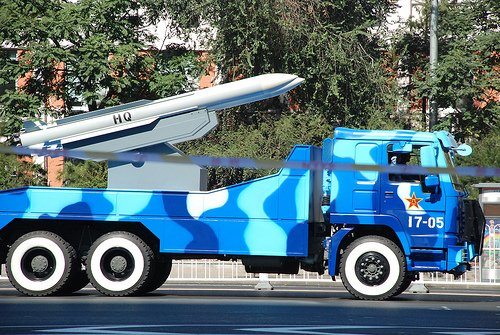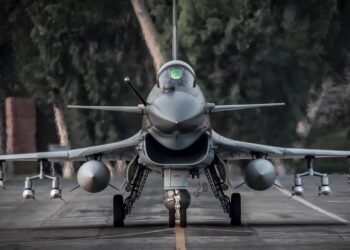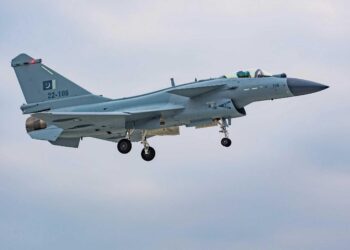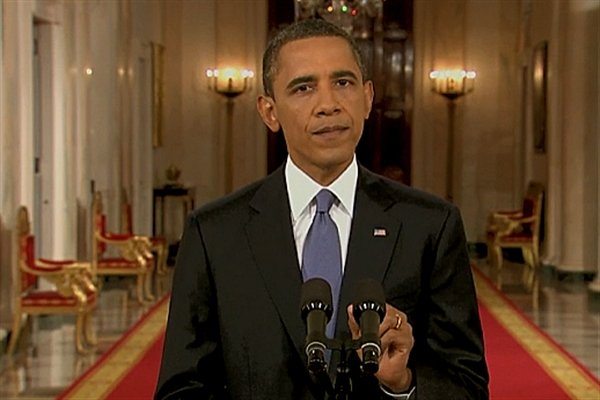The Defense Department’s 2012 Military and Security Developments Involving the People’s Republic of China report details China’s growing military capabilities, and points to areas of cooperation between the United States and China, a senior DOD official said here today.
Delivered to Congress today, the annual report discusses China’s security and military strategy, developments in China’s military doctrine and force structure, the security situation in the Taiwan Strait, U.S.-China military-to-military contacts, and the nature of China’s cyber activities directed against the Department of Defense.
Other information in the report includes the People’s Liberation Army investments in China’s aircraft carrier program, anti-ship ballistic missiles and aircraft development. It also discusses China’s pursuit of its “new historic missions.”
China is building its military to be able to fight and win “local wars,” said David Helvey, the acting assistant secretary of defense for East Asia. Helvey briefed the Pentagon press corps on the report.
The Chinese military is learning from the lessons the U.S. military has compiled since the Persian Gulf War, he said. The Chinese call this strategy “informatization,” and Helvey said this is the phrase the Chinese use to encompass the revolution in military affairs. China uses this term to mean the role of information and information systems “not only as an enabler of modern combat, but a fundamental attribute of modern warfare,” he said.
The Chinese carefully watched U.S. and coalition military forces, beginning from the first Persian Gulf War in 1991, through today.
“One of the things that the PLA has consistently highlighted is the role of advanced information technology not only for intelligence, surveillance and reconnaissance, but also enabling precision fires,” Helvey said. “And when they talk about fighting and winning local wars under conditions of informatization, that’s the type of warfighting environment that … they’re talking about.”
Helvey said Chinese leaders view the first two decades of the 21st century as China’s “period of strategic opportunity.”
As China’s economic power has boomed, its influence has expanded. “As these interests have grown and as China has assumed new roles and responsibilities in the international community, China’s military modernization is also, to an increasing extent, focusing on investments that would enable China’s armed forces to conduct a wide range of missions, including those that are far from China,” Helvey said.
Last year, he said, the People’s Liberation Army demonstrated the capability to conduct limited peacetime deployments and military operations at great distance from China, including noncombatant evacuations from Libya, counterpiracy missions in the Gulf of Aden and peacekeeping operations. Still, the focus remains on the Chinese military preparing for contingencies in the Taiwan Strait.
In addition to Taiwan, China places a high priority on its maritime territorial claims, Helvey said. “In recent years China has begun to demonstrate a more routine and capable presence in both the South China Sea and East China Sea,” he said.
Helvey stressed the opportunities the situation presents to both the United States and China. Chinese ships and crews could work with international partners to tamp down piracy. Air, naval and ground forces could conduct humanitarian and disaster relief exercises together.
“There’s an opportunity for China to partner with us and with other countries to address the types of challenges that we all face in the 21st century,” he said.
Helvey said other portions of the report detail continued Chinese investments in nuclear forces, short- and medium-range conventional ballistic missiles, advanced aircraft, and integrated air defenses, cruise missiles, submarines and surface combatants and counter-space and cyberwarfare capabilities. Many of these capabilities “appear designed to enable what we call anti-access and area-denial missions, or what PLA strategists refer to as counterintervention operations,” Helvey said.
The January 2011 flight test of China’s next-generation fighter aircraft, the J-20, highlighted China’s ambition to produce advanced fighter aircraft. The flight, which occurred during then-Defense Secretary Robert M. Gates’ visit to China, points to an effective operational capability no sooner than 2018.
Other steps include sea trials of China’s first aircraft carrier, which it purchased from Ukraine in 1998. The ship could become available to the PLA Navy by the end of the year, “but we expect it’ll take several additional years for an air group to achieve a minimal operational capability aboard the aircraft carrier,” Helvey said.
China has also made investments to improve its capacity for operations in cyberspace, he said.
“That is something that we pay very, very careful attention to,” Helvey said. “There is the potential for these types of operations to be very disruptive — disruptive not only in a conflict, [they] could be very disruptive to the United States, but other countries as well.
“That’s one of the things about military operations in cyberspace,” he added, “that there can be cascading effects that are hard to predict.”
The report is DOD’s effort to forecast China’s intentions, Helvey said. While there have been improvements in transparency within the Chinese military, he added, much still occurs in secret. He pointed to developments in cyber, space and with foreign-bought weapons systems as not being part of China’s published national security budget.
That budget grew 11.2 percent from 2011’s $91.5 billion to $106 billion — continuing two decades of hothouse growth.
Helvey said the report is an effort to ensure the United States isn’t taken unawares by China’s military progress, but he acknowledges there will probably still be some surprises.
“We have seen in the past, instances where China has developed weapons systems and capabilities that appeared either earlier than we expected or that we were surprised when we saw it,” he said. “I think that is something that we have to anticipate and expect.
We’re paying very careful attention to China’s military modernization,” he added, “but we’ve been surprised in the past, and we may very well be surprised in terms of seeing new weapons and equipment in the future.”
[Download not found]











